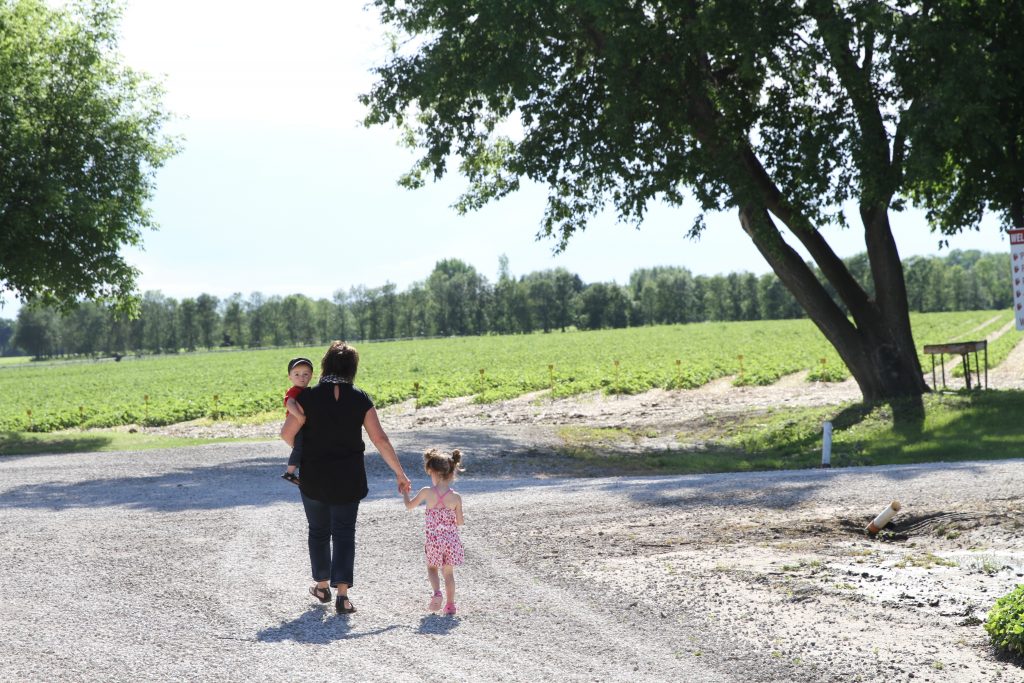
Are visitors safe on your farm?
By Canadian Agricultural Safety Association
Features Business & Policy Agritourism Business/Policy Success in Agriculture Agritourism (activities that bring visitors to a farm or ranch) isn’t without risk. Canadian Agricultural Safety Association.
Agritourism (activities that bring visitors to a farm or ranch) isn’t without risk. Canadian Agricultural Safety Association.October 25, 2016 – Corn Mazes, pumpkin picking, hayrides and Christmas trees. These are all reasons why visitors flock to farms in the fall and winter. Nothing is more enjoyable than spending time with your nearest and dearest enjoying the weather and an outing to a local farm. However, agritourism (activities that bring visitors to a farm or ranch) isn’t without risk. Anytime people are in a situation where they could be in contact with animals, farm equipment or other hazards like water, there is the potential for injury.
Agritourism is one venue for people to be visiting a farm, but other visitors come too. Open farm days are becoming more popular each year. And of course, family and friends enjoy coming to see where their loved ones work and live. It’s important to remember, these non-farm folks may not see the hazards or understand the risks of farm life, it’s up to you to tell them.
First of all, think about driving and parking on your farm. Moving vehicles and moving people aren’t the best combination. Having a designated area with clearly marked parking areas will help keep vehicles and people where they are supposed to be.
The point of visiting the farm is to enjoy the sights, sounds and smells of the farm. In order for visitors to have the best time possible, direct your visitors to the low hazard areas on the farm. Take into account the hazards that you have on your farm, it could be places like busy work areas, slurry pits, grain handling areas, or even animal pens. Each farm is unique, and it’s up to you to identify these areas. If you can’t direct visitors away from these areas, take steps to warn them with signage or even barriers like fences.
Keep trip, slip and fall possibilities to a minimum. Not everyone visiting your farm may be sure-footed or able to quickly compensate for slippery, rough, or cluttered surfaces. Walking through grassy areas with ant mounds or gopher holes might not seem too risky, however falls, especially for older adults, can lead to serious injuries and other complications. Asking everyone to walk on designated paths or roads can help avoid these mishaps.
If you’re providing food or if people are picnicking on your property, handwashing stations are a must. Keep in mind, if you are providing a petting zoo, handwashing is very important. It’s a good idea to make sure that people understand that washing up is a good idea after touching an animal.
Remember, if you’re putting people in motion on something like a hayride, you need to work out procedures and policies including mapping out a safe route that doesn’t cross public roads, safe equipment to operate the hayride, and rules for riders are clearly expressed. This list isn’t comprehensive, it’s up to you to determine the unique hazards and risks associated with your operation.
These are just a few things to think about when people come to visit your farm. So it’s essential to have a plan – one for keeping you, your family, your employees and your visitors safe on the farm. Walkthroughs, having an on-farm safety plan and committing to a safe farm can mean all the difference.
For more information about agritourism and how to make your farm safe for visitors, please visit safeagritoursim.org. For more information about farm safety, visit www.casa-acsa.ca.
Print this page